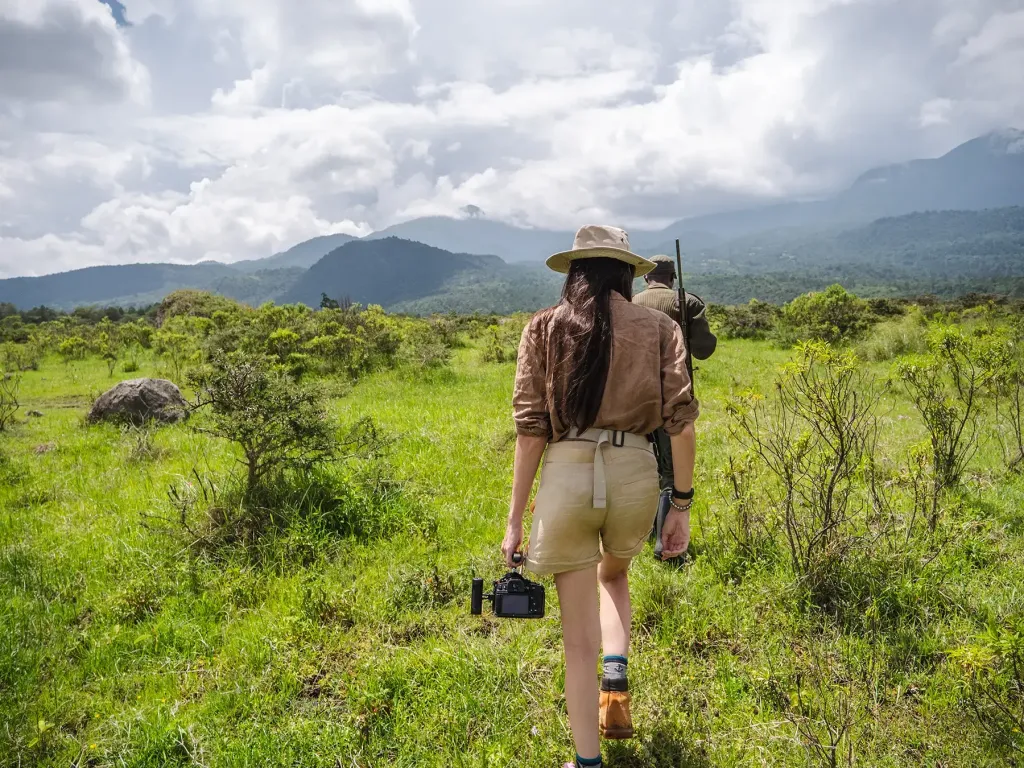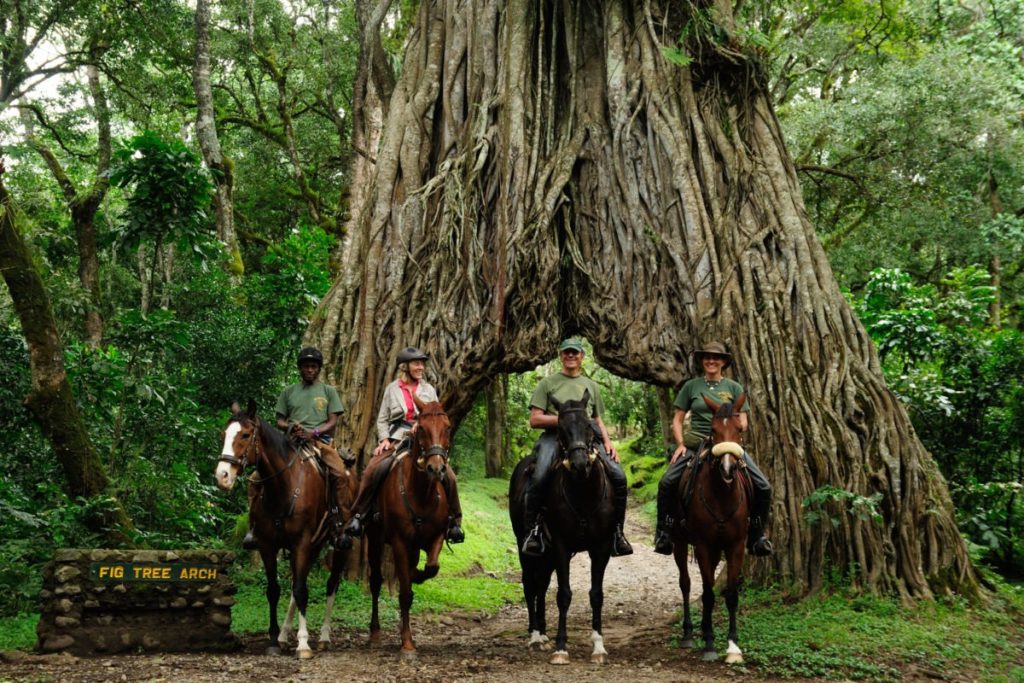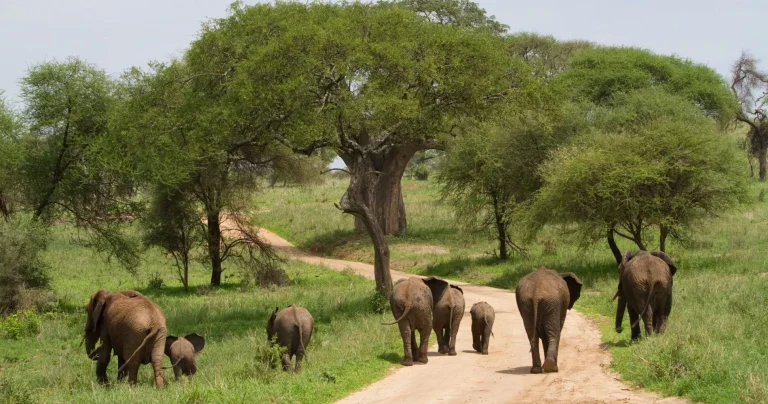Arusha National Park Photography Safari




Introduction to Arusha National Park Photography safari
Arusha National Park offers photographers a diverse landscape filled with wildlife, dramatic scenery, and captivating vistas, making it a dream location for a photography safari. Known for its rich variety of ecosystems, ranging from dense montane forests to open savannahs and sparkling lakes, this park provides endless opportunities for capturing Tanzania’s natural beauty. The park’s unique proximity to both Mount Meru and Mount Kilimanjaro also allows for breathtaking shots of these iconic peaks, especially during early mornings or sunsets.
Why Arusha National Park is Perfect for Photography
Arusha National Park is relatively compact, allowing photographers to access diverse habitats within a short distance. Unlike some of Tanzania’s larger parks, where drives between locations can be long, Arusha provides a quick transition from one scene to another, offering a high concentration of subjects for wildlife and landscape photography. The variety of terrain, flora, and fauna makes each visit unique, even for returning photographers.
The park’s quieter atmosphere and relatively low number of visitors allow for uninterrupted shooting, helping photographers capture the essence of the wild without the hustle and bustle of crowded game reserves.
Key Photography Highlights in Arusha National Park
- Wildlife Close-Ups: Arusha National Park is home to over 50 species of large mammals, including giraffes, buffaloes, zebras, and warthogs. The park’s variety of ecosystems means photographers can capture different species in their natural habitats. The black-and-white colobus monkeys, often found in the park’s forested areas, are especially photogenic, with their long, flowing fur and striking black-and-white patterns.
- Bird Photography: The park is a haven for birdwatchers and photographers alike, with over 400 recorded bird species. Birds like the Narina trogon, bar-tailed trogon, silvery-cheeked hornbill, and flamingos at Momella Lakes provide a colorful array of subjects. Bird photography in Arusha National Park is especially rewarding from November to April when migratory birds from Europe and North Africa join the local populations, creating a rich mix of species.
- Momella Lakes: The Momella Lakes offer stunning reflections, especially during early mornings. The shallow alkaline lakes attract numerous waterbirds, including flamingos, pelicans, and herons. With the right light and reflections, photographers can capture mirror-like scenes that are both colorful and serene. The lakes also provide a unique backdrop for photographing wildlife against the beautiful water, with the mountains often visible in the distance.
- Ngurdoto Crater: Often referred to as “Little Ngorongoro,” Ngurdoto Crater offers fantastic opportunities for scenic and wildlife photography. Its swampy floor is home to buffaloes, elephants, warthogs, and baboons. The crater walls, covered in lush vegetation, create a natural frame for landscape shots, and the elevation provides vantage points for wide-angle views of the crater below.
- Mount Meru and Mount Kilimanjaro Vistas: Mount Meru, within Arusha National Park, provides a stunning backdrop for sunrise and sunset photography. Clear days offer rare views of both Mount Meru and Mount Kilimanjaro together, creating an iconic East African scene. These majestic peaks add drama to landscape shots and provide a unique perspective for capturing Tanzania’s mountain scenery.
- Tululusia Hill: For panoramic views of the park, Tululusia Hill is a must-visit. This spot provides elevated perspectives perfect for capturing Arusha National Park’s varied topography and lush vegetation. Wildlife sightings from this hill also allow for distance shots that capture animals in their natural surroundings.
Best Tips for a Successful Photography Safari in Arusha National Park
- Bring Versatile Lenses: Given the range of subjects, a versatile lens kit is essential. A telephoto lens (200-400mm or more) will help capture distant animals and birds, while a wide-angle lens (16-35mm) is ideal for landscapes and capturing expansive scenes of the lakes and mountains.
- Plan for Early Mornings and Late Afternoons: The best lighting for photography is during the golden hours—early mornings and late afternoons. This is also when animals are most active. Arriving early ensures the best chance for capturing stunning lighting, unique animal behavior, and crisp views of Mount Kilimanjaro before clouds settle in.
- Prepare for Bird Photography: Arusha National Park’s birds can be elusive, so patience and a fast telephoto lens are helpful for capturing them in motion. Watching for bird activity around Momella Lakes or Ngurdoto Crater can yield spectacular shots of these vibrant species.
- Use Natural Framing: The park’s diverse landscapes, including forests, lakes, and craters, offer great opportunities for framing shots with natural elements. Experiment with branches, water reflections, and crater walls to add depth and context to your photos.
- Capture Seasonal Changes: Each season brings different photographic opportunities. The rainy season from March to May brings lush greenery, vibrant flowers, and migratory birds, while the dry season from June to October offers clearer skies for mountain shots and higher chances of spotting animals near water sources.
Why Arusha National Park is a Photographer’s Paradise
Arusha National Park combines the best of Tanzania’s natural beauty in a compact space, making it a haven for both amateur and professional photographers. Whether you’re interested in portrait-style animal shots, expansive landscapes, or the challenge of bird photography, Arusha National Park offers rich, diverse scenes that make each photo unique. For those with an eye for detail and a passion for capturing nature’s beauty, the park provides a canvas like no other.



One Comment